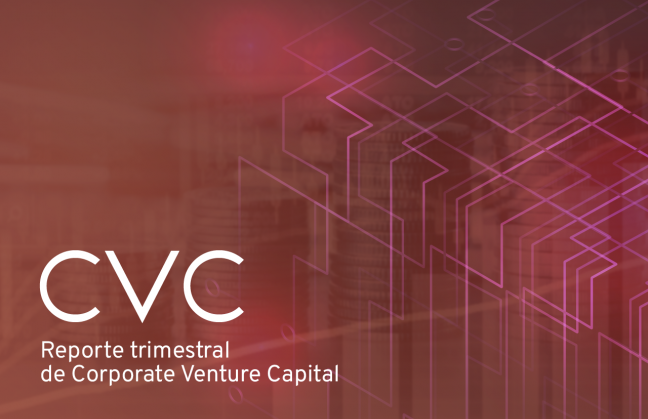Increasing CVC Momentum in Latin America

Covid-19 accelerated the digital transformation, and this received a strong boost from CVC at a global and regional level in Latin America. A few years ago, talking about CVC was considered exclusive to Silicon Valley area, and now countries like Brazil have one of the highest levels of internet usage, social networks, and other technologies.
Some corporations are experiencing increased sales and operational flow, which puts their CVCs in a position to invest. CVC can provide access, such as the Argentine corporation MercadoLibre, which acquired Lagash, a software startup based in Buenos Aires. Brazil's Nubank acquired the software consultancy Cognitect Inc, based in the USA.
The majority of CVC operations in Latin America are concentrated in the industrial sector, financial services, and information technology. However, in the context of digital transformation, financial services leverage artificial intelligence, which also transforms digital supply chains toward consumers.
Collaborations are also observed in Latin America, such as the Extreme Tech Challenge (XTC), which boosted the world's largest startups sponsored by 40 corporations, including notable players like Samsung Catalyst Fund and Qualcomm Ventures. These initiatives may seek replication in other Latin American countries like Mexico.
CVC Market Summary
During the year of 2022, the total number of deals backed by a CVC was approximately 5,281 with US$192bn in capital raised. This represented a fall down of 38% in the amount of capital raised and 2% less in the number of deals, in comparison to the activity of 2021 (according to the World of Corporate Venturing report from GCV).
Since the beginning of this 2023, there have been several CVC-backed deals, some of the main transactions to the middle of March are the following:
- 02/13/2023: Zeekr raised USD$750mm with a valuation of USD$13bn for its Series A, backed by Contemporary Amperex Technology. Zeekr develops an electric mobility technology and manufactures premium electric vehicles. Some of the other investors that participated are Xin’an Intelligent Manufacturing Fund, Guangzhou Yuexiu Industrial Investment Fund, Tongshang Fund and Amnon Shashua (CEO of Mobileye).
- 01/09/2023: Monogram Health announced an investment of USD$375mm in a Series C round backed by CVS Health. Monogram Health focuses on providing polychronic patients with personalized in-home care services. Other investors that participated were Cigna Ventures, Humana, Memorial Hermann Health System and SCAN.
- 03/14/2023: Adept AI closed a deal for an investment of USD$350mm in a Series B round backed by Microsoft and NVIDIA. Adept AI develops a machine learning model that aims to automate repetitive tasks in software processes for developers. This round was led by General Catalyst and Spark Capital and included the participation of Workday Ventures, Greylock, among others.
- 02/01/2023: Our Next Energy raised USD$300mm with a valuation of more than USD$1bn in its Series B, backed by two undisclosed strategic investors within EV technology manufacturing and renewable energy supply. Our Next Energy develops an energy storage technology for vehicles to improve safety and sustainability. The round was led by Franklin Templeton and Fifth Wall with the participation of Temasek, Riverstone Holdings, and Coatue.
- 02/27/2023: Skydio announced USD$230MM in a Series E round, NTT DoCoMo Ventures and NVIDIA invested in the funding round. Skydio creates flying drones using artificial intelligence for consumer, enterprises, and government customers to automate inspection duties and gain situational awareness in critical circumstances. The funding round included the participation from: Andreessen Horowitz, Next47, Hercules Capital, IVP, Axon, Linse Capital and UP Partners.
- 01/25/2023: Paradigm raised USD$203mm in a Series A round backed by Google Ventures. Paradigm is a clinical research platform that allows patients to participate in clinical trials and enhance trial efficiency. Some of the other investors included ARCH Venture Partners, General Catalyst, F-Prime Capital, LUX Capital, etc.
CVC Opportunities in Nearshoring
Today it is surging one of the biggest economic growth opportunities of the last decades for Latin America with Mexico as the protagonist in this arriving wave.
During the past years, global supply chains have been disrupted by high volatility in supply and demand, mainly due to the pandemic and the historic-high inflation rates. Besides, the recent tension between nations triggered by the Russian invasion of Ukraine and the relationship breakdown between the US and China have brought a lot of barriers and restrictions for international trade. Thus, the macro-environment has forced global companies to restructure and optimize the end-to-end supply chain. Some of the clearest examples are companies relocating their manufacturing plants to countries that are geographically closer to their main markets to reduce logistics costs, save time, and increase control of key operations. This phenomenon is called nearshoring, and Mexico is positioned very strongly to seize this opportunity thanks to being the neighboring country of the US, having robust commercial agreements such as the USMCA, and its cheap labor costs.
Some multinational companies are starting to reap the benefits of this upcoming shift of industrial operations to Mexico. For example, Tesla just announced an investment of around $5 billion dollars to build its new gigafactory “Giga Mexico” in Nuevo León, or BMW’s $865 million dollars investment in San Luis Potosí to produce batteries for their EV business line.
Nearshoring for Mexico and Latam means a huge opportunity in economic terms since this will bring foreign investment and create new jobs. However, companies looking to venture in these activities should keep in mind that the region still lags behind in infrastructure and tech-enabled capabilities compared to its Asian counterparts, hence investment in new technologies that bring efficiency and improvement to the industry and skilled and experienced labor force will be necessary. Consequently, this brings one of the largest opportunities for Startups, VC funds, and Corporate VC funds in the region. The latter have gained a lot of relevance in the last decade, as per Q4 2022, 26% of the US VC deals had participation from CVCs, mainly because of the strong synergies CVCs create along with Startups.
For CVCs looking to invest in this sector, one focus could be on B2B startups. More specifically, founders building enterprise software solutions to automate processes and improve the efficiency of the supply chain. It is important to notice that global supply chains have a lot of transversal areas, so it is important to focus not only on startups that are explicitly within logistics and manufacturing industries but also startups that are building horizontal solutions that can impact every aspect of a global logistics network.
There is an extensive range of core technologies that will leverage the nearshoring development, for example, IoT sensors will be used to better manage capex and predict maintenance events, AI/ML and Data Analytics will automate processes and improve decision-making, Fintech solutions will digitize equipment leasing, working capital lending and trade finance services, HR tech will bring flexibility and efficiency through on-demand staffing, and intelligence for hiring and retention, B2B marketplaces will unify fragmentation among suppliers, additionally, big opportunities for energetic infrastructure and cybersecurity will arise. Timing the market will be critical in these early years since it is probable that the most visible problems might be the first ones to be solved, and later on, challenges will get more complex.
Nearshoring is a huge opportunity for Mexico and Latin America, and there is no doubt that collaboration between big corporates and startups will help to improve the way the region seizes it. CVCs will play an important role since they can obtain strategic value from startups to develop a more agile and efficient way to operate while providing value and helping them grow faster by testing product-market fit and getting access to capital.
This is a great chance for the Latin American innovation ecosystem to propel the development of more tech-based, scalable, and robust solutions that can grow globally and bring economic prosperity to the region.
The authors of this report are Héctor Shibata, Gonzalo Soriano, Ana Aguilar, David Pérez and Fernando Ojeda.
Read our quarterly report here



